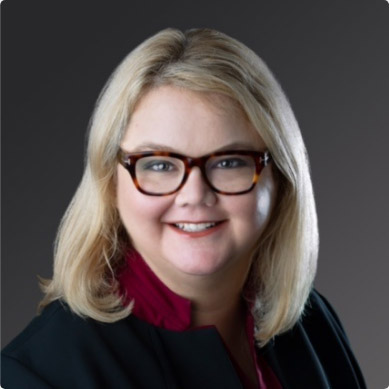
Paid family and medical leave (PFML) requires a watchful and expert eye as new and evolving legislation takes shape across the country. Support for these laws is increasing at a time when human resources (HR) leaders have mounting responsibilities and must practice due diligence to keep employers competitive, compliant, and supportive of employee populations.
PFML has also become a more critical and sought-out component of employee benefit packages as administration of the programs becomes more complicated. And that creates challenges for employers that are considering starting, expanding, and integrating PFML into their benefits programs.
Mapping PFML Legislation
Statutory PFML and paid family leave (PFL) programs are administered in a variety of ways across the country. And because no leave law is identical, program administration quickly gets confusing when employers are trying to track requirements and ensure compliance, especially when employees work in multiple states. Each time there is a new law or changes to legislation, companies must adapt. This shift requires time, resources, and access to the most current information.1
Staying up to speed on evolving state legislation helps HR leaders understand how changes could affect their programs, companies, and employees. In 2023, states with programs in force are implementing changes to their contributions, benefits, and, in some instances, reasons for leave and definitions of eligible family relationships. Four additional states (Oregon, Colorado, Delaware, and Maryland) will implement PFML programs through 2026, and employers need to be aware of key dates for contributions, benefits, and regulatory posting requirements.
In addition, a mandatory PFML program for state employees in New Hampshire became effective in 2023. Private employers can opt into the state program, but they are not required to participate. Vermont has taken a similar approach, announcing it will launch mandatory coverage for state employees beginning July 1, 2023, along with a voluntary PFML program option for nonstate employers, self-employed individuals, and employees of nonstate employers with a phased approach for opting into the program through 2025.
Labor Force Trends
As states add and expand PFML laws to meet the growing needs of Americans, including childcare and mental health support, employers should consider caregiver needs and adjust their programs to attract and retain talent. The U.S. is home to an estimated 53 million unpaid American caregivers,2 who balance full- or part-time work with raising families, caring for sick loved ones, and/or assisting aging loved ones.
The pandemic highlighted the disparate impact of caregiving on workers. Millions of employees with caregiving responsibilities, especially women, were forced to choose between their jobs and personal responsibilities,2 and many of them quit.3
Remote work also complicates administration and management of PFML. Today, 4.7 million Americans work remotely at least half of the time,4 and that number is expected to increase through 2023.5 While remote work can level the playing field6 for employees who are caregivers, it adds nuances and challenges for HR teams that must track leave laws across states, including those in which they are not headquartered, and educate out-of-state employees about PFML and PFL entitlements.
Data Illustrates Need for Planning
When new PFML laws come into effect or change, employers should assess benefit programs to identify conflicts. In addition to addressing program compliance, they must consider whether new PFML programs can be integrated into employer-offered benefits to simplify management.
The 2022 PFML Planning Survey Update,7 which includes data from more than 450 HR professionals in states that require PFML or PFL, shows that seven out of 10 employers (69%) had paid leave programs prior to state mandates, and 58% of them do not feel prepared to administer new state-mandated paid leave programs for various reasons. Four in 10 anticipate difficulties in the next few years managing their paid leave programs, especially when it comes to compliance across multiple leave programs (39% expect difficulties), staying current with requirements and how they overlap with other leave management programs (38% expect difficulties), and managing requirements across multiple states (37% expect difficulties).
Coverage Gaps
Some companies are forging their own paths. Among companies operating in multiple states, the report7 shows that nearly 40% offer an umbrella approach (and are adding new options) to provide the most generous program benefits regardless of where people live.
By assessing coverage gaps, employers can add benefits and increase levels of coverage to gain a competitive advantage to attracting and retaining talent. For example, survey respondents say they have or will make changes to their disability benefits as a result of new paid leave laws with two out of five adding benefits like short-term disability and long-term disability. This trend indicates that employers are finding ways to give employees the best of both worlds.
More than half (55%) report they offer better coverage through existing disability benefits than what is mandated through state paid leave programs, and 35% say they address that gap with their benefits.
Support
Between 44% and 62% of the companies that do not yet have programs in place need more information to make effective decisions about PFML or PFL programs, specifically the benefits of going with a state program or a private carrier. They also need information on how plans integrate with other absence management programs and private carriers’ claims administration practices. In addition, half or more still need basic information about coverage levels, cost, plan administration, and so on.
Administering mandatory paid leave programs can be a daunting task, especially if an employer does not have a similar program in place. It requires PFML expertise, resources, and active attention to changes in laws, which leaves many employers feeling ill-prepared to establish and maintain programs. And 20% of the respondents have not decided how they will administer their programs. 7
The following steps help employers navigate requirements and options:
-
- Get the most current information about state paid leave requirements where employees work by attending state-run public hearings (on rule creation and other topics) and webinars. Employers should also sign up for state program email newsletters.
-
- Review current benefits and leave policies, and assess how new requirements will affect current offerings.
-
- Assess company bandwidth and resources to address paid leave administration and compliance.
-
- Look into state paid leave insurance programs and their potential pros and cons.
-
- Research private insurance details if private leave insurance is allowed.
-
- Contact a broker or PFML provider about PFML guidance, outsourcing administration, and private insurance options.
Competitive Differentiators
With legislative sessions starting (and some states, like Oregon, holding longer sessions this year), HR and benefits professionals should expect meaningful movement with PFML legislation in many states. It is fair to expect more dialogue about the importance of paid leave and how it could work on a federal level. If a federal program comes to fruition, the discussion will turn to determining how it interacts with existing programs.
Meanwhile, companies that implement, embrace, and promote paid leave programs that interconnect with other disability benefits will be able to differentiate themselves by showing they invest in a culture of care and well-being. Given the emerging focus on changes in the workforce and employees demanding more flexibility to care for themselves and their families, employers have an opportunity to make work-life balance more achievable while maintaining employee morale and productivity. And this can be an effective recruitment and retention tool.
Though PFML adds a new layer of challenges for today’s HR professionals, this popular leave provides an opportunity for leading benefits professionals and organizations to demonstrate best practices and create meaningful and competitive benefits packages that matter deeply to their current and future employees.
References
-
- The Standard. States with Paid Family Leave. Retrieved from https://www.standard.com/employer/products-services/insurance-benefits/states-paid-family-leave
-
- AARP. Schoch, Deborah. 1 in 5 Americans Now Provide Unpaid Family Care. Jan. 10, 2023. Retrieved from https://bit.ly/3CDvx3U
-
- Rosenberg, Eli. Workers Without Sick Pay or Family Leave Quit During the Pandemic More Than Those Who had Benefits, House Report Shows. NBC News. Oct. 25, 2022. Retrieved from https://nbcnews.to/3X37eom
-
- Apollo Technical. Statistics on Remote Workers That Will Surprise You. Apollo Technical. Dec. 2, 2022. Retrieved from https://bit.ly/3GwRrqO
-
- Ladders, Inc. 25% of All Professional Jobs in North America will be Remote by the End of Next Year. Ladders. Dec. 7, 2021. Retrieved from https://bit.ly/3IEZjsR
-
- Christ, Ginger. Remote Work Levels the Playing Field for Caregivers, Survey Finds. HR Dive. Nov. 17, 2022. Retrieved from https://bit.ly/3OmCafP
-
- The Standard. The 2022 PFML Planning Survey Update.











